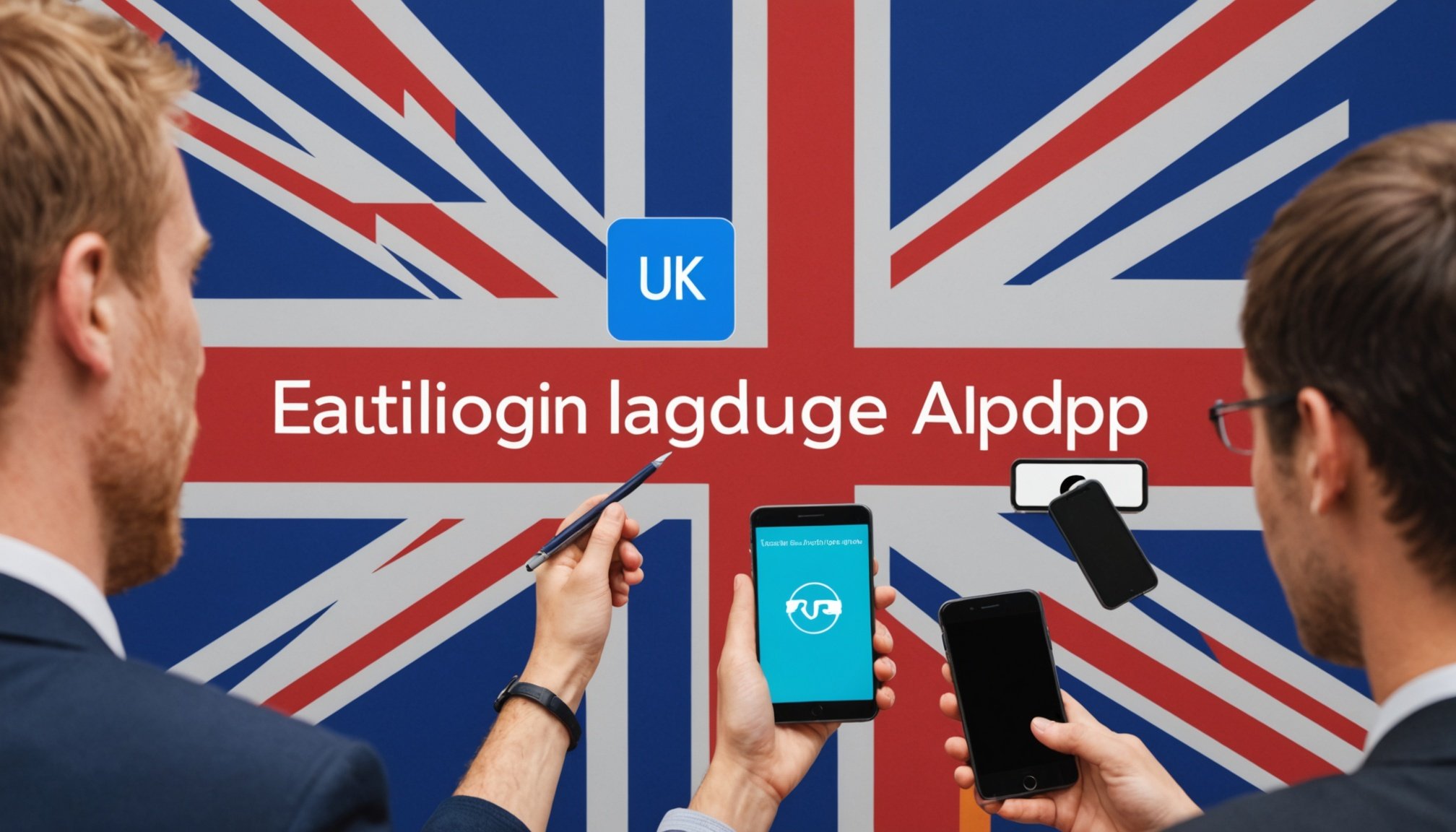Understanding UK Educational Technology Standards
In the UK, educational technology standards play a crucial role in shaping how language learning apps operate. These standards ensure a consistent quality of education and technological safety across digital platforms used in educational settings. Regulators have implemented these guidelines to secure data privacy, ensure accessibility, and provide equitable educational opportunities. Adhering to these regulations not only enhances app functionality but also enriches user experience by providing a secure and effective learning environment.
Compliance with UK educational regulations is vital for language learning apps aiming to establish trust and reliability among users. These standards ensure that apps are not only effective educational tools but are also safe and inclusive. Compliance often requires app developers to incorporate features like content filtering, user privacy safeguards, and adaptive learning mechanisms, enhancing both security and functionality.
In parallel : Establishing a UK Coworking Space: Your Complete Guide to Health and Safety Compliance
For users, the impact of these standards is significant. They guarantee that apps meet certain quality criteria, making interactions more reliable and seamless. By fostering a user-friendly interface and high-quality educational content, these regulations directly affect the functionality of language learning apps. Ensuring compliance with educational technology standards in the UK contributes to better educational outcomes for learners.
Steps for Developing a Language Learning App
Creating a language learning app involves several important steps. Understanding the app development process is crucial for success. It begins with defining the app’s goals and identifying the key elements in the development lifecycle. These elements include planning, designing, coding, testing, and launching.
This might interest you : Mastering the Creation of a UK Online Learning Hub for Professionals: A Guide to Compliance and Certification Standards
Incorporating language learning features is essential for engagement. Such features might include interactive lessons, audio pronunciations, vocabulary lists, and spaced repetition systems to enhance memorisation. Including speech recognition capabilities allows users to practise speaking, offering immediate feedback. Cultural context features also enrich the learning experience, making the app more comprehensive.
When it comes to app design, best practices focus on a user-friendly interface. Prioritise simplicity and intuitive navigation. Visual aids such as icons and images can enhance understanding. Ensuring a responsive design is important so that the app functions well on all devices. Implementing customisation options, like adaptive learning paths, can cater to individual learner preferences. Keep the user experience engaging with clear progress tracking and achievable milestones.
These steps and features will help create effective and appealing language learning apps that stand out in the market, providing valuable learning resources for diverse users.
Navigating Regulatory Compliance
Fulfilling regulatory requirements is crucial for ensuring that educational technology products comply with applicable standards and foster a secure learning environment.
Data Protection and Privacy Laws
Educational platforms must adhere to data protection laws like GDPR, which governs the collection, use, and storage of personal data within the EU. GDPR’s stringent guidelines require applications to implement robust data protection measures, ensuring users’ privacy by design. Non-compliance could lead to significant penalties, impacting both finances and reputation. Therefore, understanding and integrating these regulations within app design is imperative.
Accessibility Standards
Compliance with accessibility standards ensures technology is usable by all students, including those with disabilities. This might involve features like text-to-speech or adjustable fonts to cater to diverse needs. Ensuring accessibility not only facilitates a more inclusive learning environment but also aligns with legal mandates such as the Americans with Disabilities Act (ADA).
Curriculum Alignment
Educational compliance requires tools to align with national curriculum objectives. This ensures that the content and methodologies within educational applications support established learning goals. Maintaining alignment can enhance a program’s relevancy and efficacy, building trust with educators and stakeholders who rely on adherence to regulatory frameworks.
Best Practices for User Engagement
Creating a meaningful connection with learners is vital for ensuring user engagement in language platforms. Incorporating effective user engagement strategies can significantly enhance learner interaction and satisfaction.
To foster engagement, consider incorporating elements such as interactive activities, quizzes, and real-life scenarios that relate to learners’ interests. Engaged learners are more likely to retain information, improving overall learner retention.
Gamification in Language Learning
Gamification plays a significant role in language learning by introducing elements like rewards, levels, and challenges. This approach transforms learning into an amusing and motivational experience. By blending educational content with game-like features, learners are encouraged to compete and collaborate, increasing their engagement and commitment to the learning process.
Continuous Feedback and Improvement
Consistently gathering feedback is another essential strategy for maintaining user interest. Regularly solicit feedback to address user concerns and adapt the platform accordingly. This strategy not only boosts learner confidence but also ensures the platform remains responsive to their evolving needs.
By implementing a mix of personalized content, gamification, and consistent feedback mechanisms, language learning platforms can create a more engaging and effective learning environment.
Case Studies and Insights
Delving into the successful language apps reveals valuable insights into what makes an app stand out in a competitive market. Through case study analysis of leading UK-based language learning apps, it becomes evident that personalization and innovative features, such as adaptive learning algorithms and immersive content, are critical components for success.
Analysis of Leading Language Learning Apps
Successful apps often share common traits, including a focus on user engagement and interactive experiences. Some industry insights indicate that apps utilizing gamification techniques and real-world scenarios engage users more effectively, improving retention rates and fostering consistent learning habits.
Lessons Learned from Failed Apps
Unsuccessful apps frequently fail to address user needs or offer outdated content and functionality. Analyzing these failures highlights the importance of ongoing updates and feedback loops to stay aligned with user expectations and technological advancements.
Expert Perspectives on Future Trends
Experts predict emerging trends such as virtual reality and artificial intelligence will shape the future of language learning technology. These innovations promise more immersive and personalized learning experiences, which could redefine traditional methods and set new expectations for successful language apps. As the industry evolves, staying informed about these trends will be crucial for developers and learners alike.
Practical Tips for Launching Your App
Launching an app, especially in the educational sector, necessitates a robust app launch strategy. Begin with a comprehensive plan, delineating each step from development to release. Ensure your strategy includes user acquisition tactics tailored to your app’s educational focus. Educational apps benefit from targeted marketing strategies that highlight their unique ability to enhance learning experiences. This includes leveraging social media platforms like Facebook and LinkedIn to connect with educators and students alike.
Marketing educational apps effectively requires identifying your target audience and tailoring your messaging accordingly. Highlight the app’s benefits for different learning environments, whether it’s in the classroom or for self-paced learning. Collaborate with educational influencers to boost credibility and reach a wider audience.
Establishing a user community is paramount for sustained engagement. This can be achieved by creating forums or social groups where users can share experiences and tips. Encourage feedback to continuously enhance the app’s features based on real user experiences. By fostering a community, you not only retain users but also turn them into advocates who amplify your app’s reach organically.











